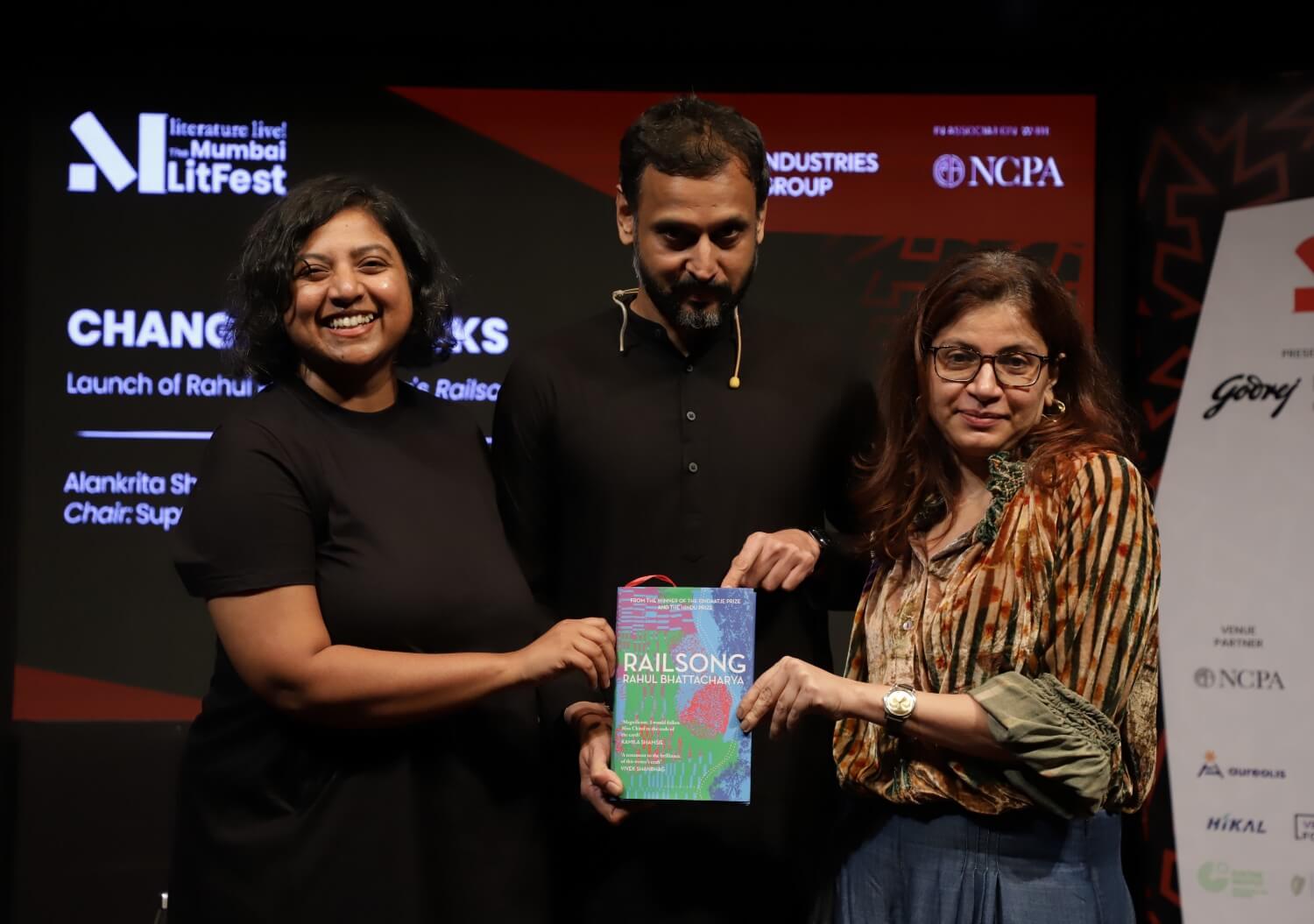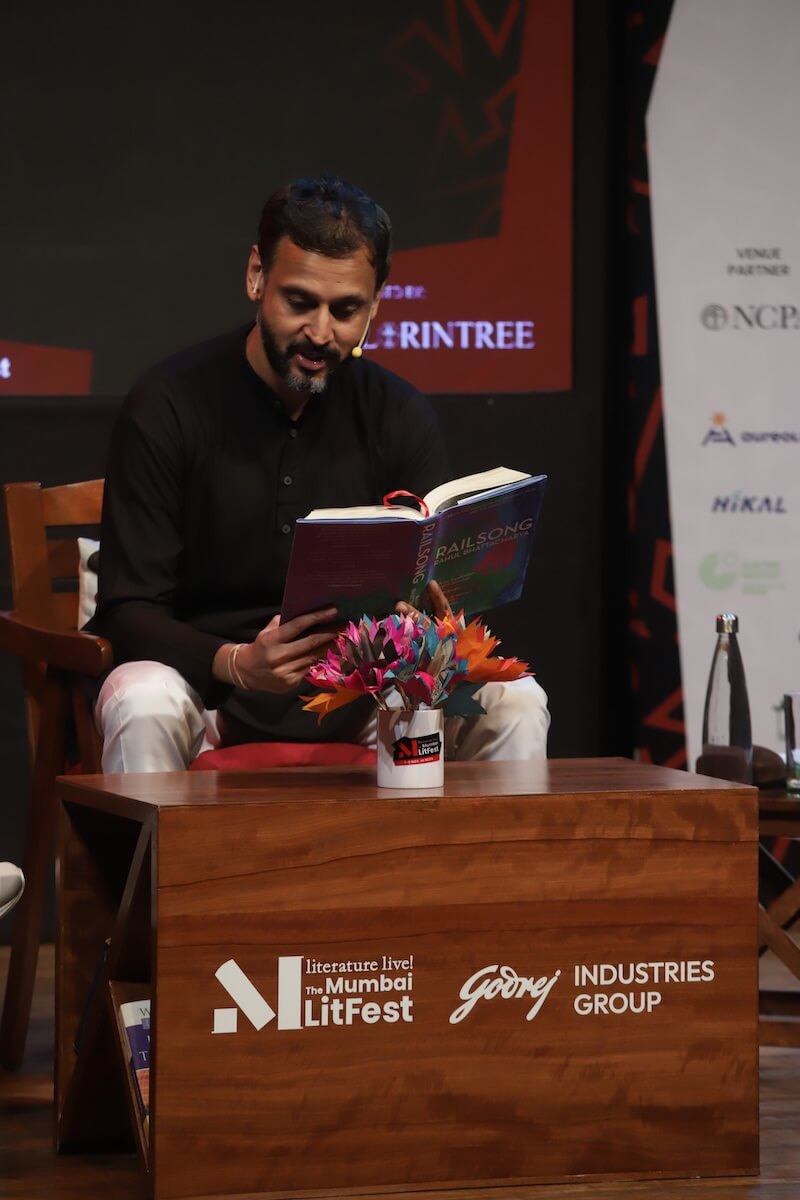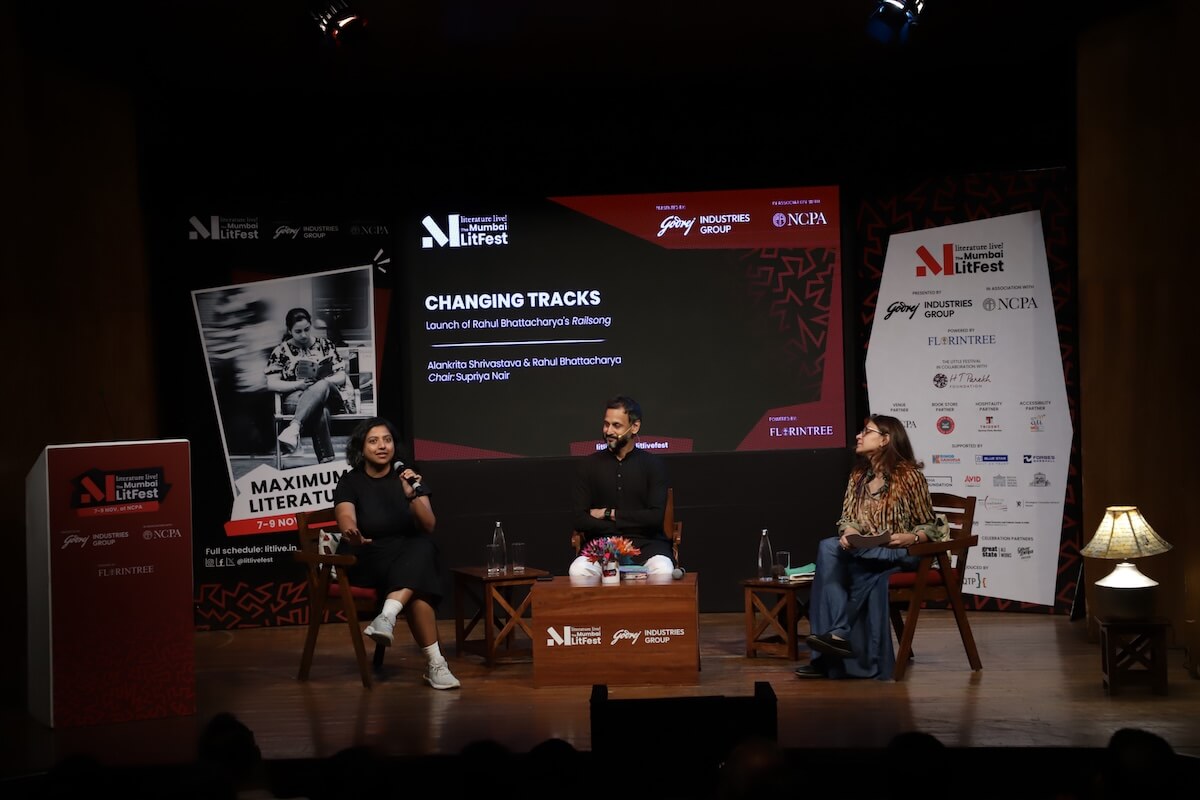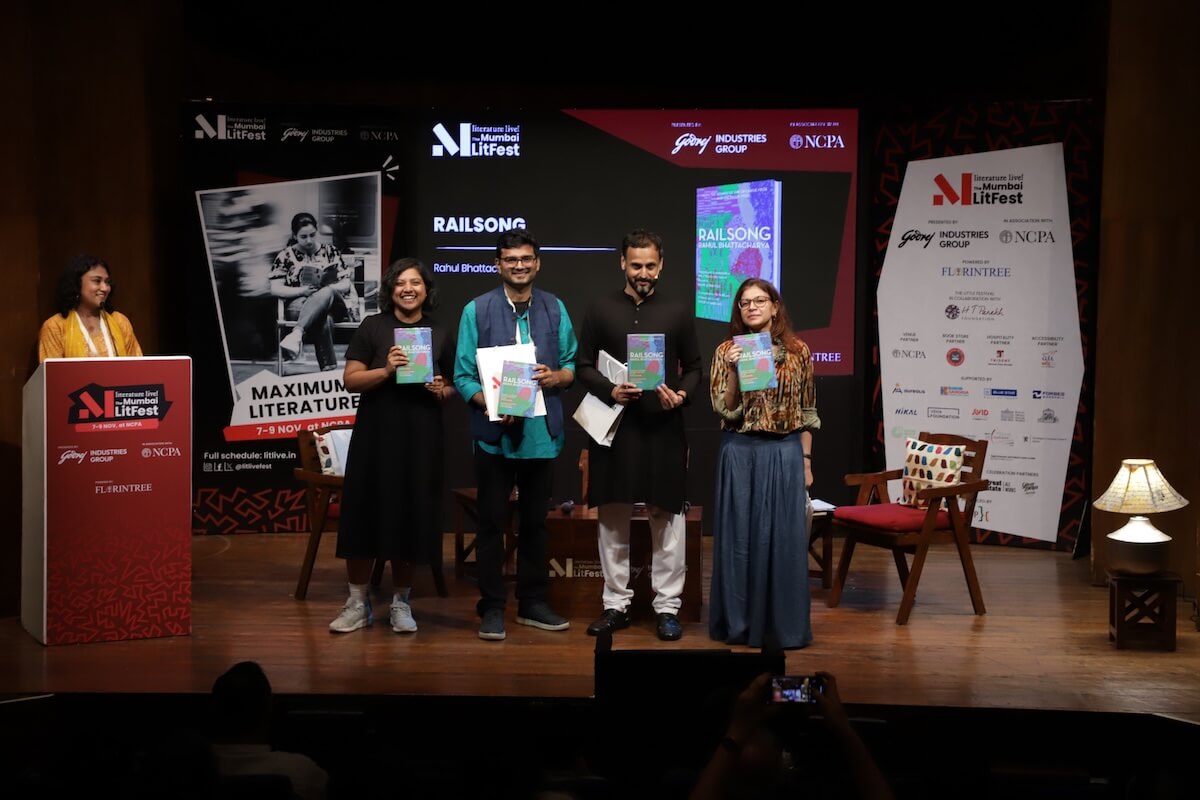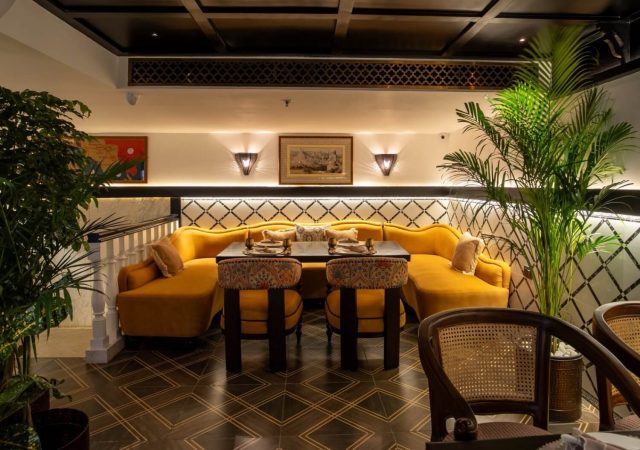Quotes
While talking about why he chose the railways as a theme, Rahul Bhattacharya said, “For me, the impulse was, when I was thinking of a very raw idea, that it would be really interesting to look at a gigantic Indian enterprise, like the railways or the census, something which can gesture at the enormity, the complexity and the sheer scale of this country. And within that, place an individual.”
Discussing is experience of writing the book, he said, “I have been writing this book for about a decade, and I have handwritten the first draft because I absolutely could not descend into a fictional space on the computer.”
Alankrita Shrivastava shared how she resonated with the character, saying, “I loved her; I really really, loved the character and saw so much of myself in her. It’s like you’re seeing the character in her life, but you’re also seeing the life of the country and the life of working women”, further adding, “the book is a really wonderful chronicle of girlhood and then going into womanhood. In the book, with time you can feel a strong sense of rhythm and time.”
Summary
The third day of the Literature Live! The Mumbai LitFest saw numerous immersive performances, interactive workshops, panel discussions and much-anticipated book launches. One such launch was novelist Rahul Bhattacharya’s Railsong. This epic novel explores the journey of the protagonist Charu, from girlhood to womanhood, against the backdrop of India’s progress and its lifeline, railways.
Alankrita Shrivastava started with reading an excerpt from the book. She took the audience on a journey of getting to know who Charu, aka Charulata, is. The reading then segued into discussing the world of Charu, how the character evolved, her relationship with India’s progress, and her identity.
Rahul then explained who exactly Charu is. He introduced the idea of how, for an amputee, there’s the phantom limb, and it generates an aching feeling. Likewise, the character losing her mother at a young age, and the void that it results in is indescribable. This very notion of a void and maneuvering through life informed the book.
The book is set in the ‘70s. So, the energy, the milieu, and the circumstances are different. Rahul talked extensively about how he paced the different times in Charu’s life.
From her childhood to teenage years to becoming a woman in her own right, he explained how rhythm informed the timespan in the novel. Charu being fascinated by the concept of census, it helped him to pause every decade and talk about the evolution of her idea of the country.
As the session inched to a close, even those who were totally unacquainted with the book identified with Charu’s story, her resilience, and her fascinations. Rahul’s journey with this book is reflected through every pause, every distinct description, as he amplified Charu’s voice through having conversations with many languages and cultures, making this a standout literary venture.


